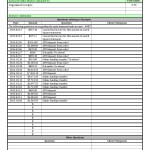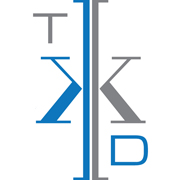The Bookkeeping Department Session Checklist
This is a revolutionary tool in the bookkeeping service industry.
The Bookkeeping Department strives to be accurate and timely when we provide our services. But that’s not enough. We must also be accountable to our clients, and provide an easy means of addressing issues as they arise.
The Bookkeeping Department Session Checklist serves these purposes:
- Accountability – The Checklist shows our clients who worked on their file, how much time was spent, what work was completed, what issues arose during processing, and other critical information.
- Communication – Issues arise all the time: missing or damaged receipts, errors from payment processors, forgotten invoices, etc. Instead of exchanging emails or phone calls, isn’t it better if everything is listed in one place so you, the business owner, can print the list and deal with it all at once? We think so, and so do our clients.
Click on the images below to see a sample Session Checklist for yourself.
Inside the The Bookkeeping Department Session Checklist
Please go through the Checklist, section by section, by clicking the tabs below.
First, notice the ID number, GP-2015.02.05. It’s also the filename. This is the date when processing in this session began. In this example it was February 5, 2015. Usually there will be no more than two days of processing in a Session.
What is a ‘Session?’ Typically it is one month of bookkeeping. If we work for you weekly or quarterly, then it would be that. Whatever the job at hand, it’s when your The Bookkeeping Department bookkeeper gets that work done.
If your job is a Rescue (e.g. getting caught up with many months) then your bookkeeper may subdivide your job. Thus there will be several Sessions.
You, our Client, and the bookkeeper who processed your work are identified. We try to have only one person working on your file, but sometimes this will change. We let you know who did the work.
The time when she or he worked on the file is noted. If the bookkeeper takes a break of more than five minutes, e.g. for lunch, then that is noted. The total time in the Session is added up and shown.
If we know when your next Session is likely to be, then we note this.
Then most common issues that arise are missing, incomplete or confusing receipts. Each one that has an issue attached to it is listed.
There is a space for your response. This is how we communicate with you, our Client. You can open the file and type in what you have discovered after we alerted you to the problem.
It’s like a to-do list for you.
This is how we make sure you stay on the straight and narrow with the Canada Revenue Agency (CRA). There are a number of tax obligations that are part of running your company. The Bookkeeping Department helps by telling you the amounts you should set aside for remittance to the CRA.
In the example, you can see that during the month of January you paid your employees. After that $2,314.54 in withholding source deductions and payroll taxes are now due. Now you know so you can take care of it. Or, we can take care of it for you.
Similarly, you can see that your net GST collected was $312.54. Although you don’t have to remit it now (perhaps you are on the quarterly or annual plan), you should set this amount aside in a company savings account. It’s not your money any more.
The same for the corporate tax installment. If your company has a history we can predict reasonably closely what your corporate tax will be after year end. The last thing you want to do is write a big cheque to the CRA that will hobble your cash flow. We can estimate and suggest the amount you should set aside.
For issues that arise that are ‘none of the above.’
The ‘For Future Action’ part is for larger issues that have arisen. They might be something like, ‘Several restaurant receipts were missing one portion. Try to include both portions.’
The Stationary Provided part is in case we have to buy some stationary for you. Examples might include paper, file folders, labels, etc. This section is most commonly used by our bookkeepers who work at your site. Instead of asking you to run out and pick up something for her or him, s/he will take care of picking it up.
You are busy doing your thing. We want to do our thing—bookkeeping—for you, and know that our needs aren’t the same priority as yours. At the same time, we don’t want to get slowed down or blocked. So, let us buy whatever we need and we’ll charge it back to you at cost.
This section is about being accountable to you, our Client. This is where the bookkeeper certifies she or he has done things correctly for you.
Each line is something our bookkeeper must always be on alert for. Here are two examples.
- CTA Reports – CTA means ‘Client to Advise.’ It’s a special account where we ‘park’ transactions until you, the Client, advise us on what to do with the associated issue. It’s created and saved as a PDF file and placed in your Highshare folder for you to read.
- Saved Audit Trail – This is another PDF report for you to read. It shows you every single transaction our bookkeeper did during the session. It’s like sitting over her or his shoulder.



















